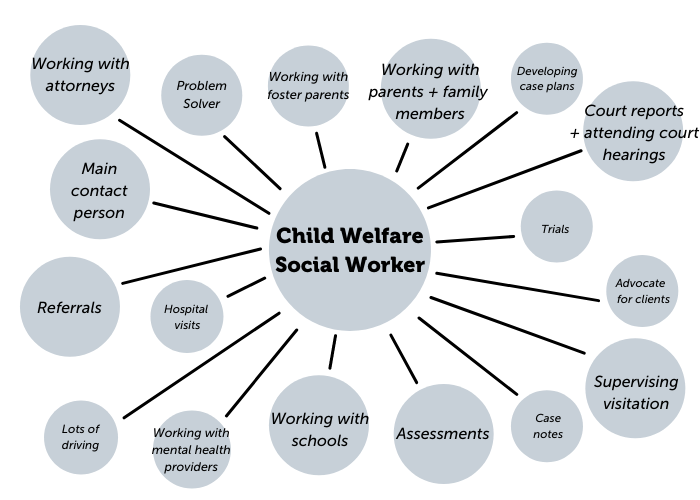What Exactly Does a Child Welfare Social Worker Do?
“I find that the general population has no idea what social work is or what social workers do. Social work is not something often depicted in Hollywood TV shows or movies (when it is depicted, it is usually inaccurate), and frankly, the tasks of social work are so varied that the work can be hard to categorize. Social work is done in hospitals, homes, and communities. Social workers often intervene when people are at their lowest, and so their work is often not shared with others. Most people encountering social workers wish they didn’t have to, and are even sometimes hostile to receiving the services that social workers are offering.”
-Blake Boyer from TheChristianSocialWorker.com
The Landscape of Child Welfare in Virginia
Before diving in, it’s important to understand that the administrative framework for child welfare services varies from state to state. The majority of states have centralized systems and can be classified as “State administered.” But Virginia is one of nine states where services are “County administered.”
https://www.childwelfare.gov/pubs/factsheets/services/
This means there are 120 different local departments of social service (LDSS) in Virginia — and the social service “experience” will look different from county to county. There are often several different types of child welfare social workers on a given team that collaborate to identify and respond to cases of child abuse and neglect. To categorize them generally:
Emergency Response or “Front-End” Social Workers
Investigate incidents of child abuse and neglect at the site (often the child’s home)
Remove children from abusive or insufficient care
Continuing Services or “Back-End”Social Workers
Work with children and their families after the child has been removed from his/her original home
Address the barriers the parents (or caretakers) are experiencing to provide their children with a minimum standard of care at home
Interact with child dependency courts to arrange for alternative living situations (foster families, adoption, and/or living with family members) for children whose parents are unable to properly care for them
Set goals, benchmarks and deadlines for parents to meet before their children can be returned to them
Work with foster families, adoptive parents and community organizations and resources to create and maintain a support system for vulnerable children
Due to limited resources and staffing, some child welfare social workers may move between emergency/first response duties and continuing services, or fulfill both types of responsibilities simultaneously, depending on their availability and the needs of the agency.
Duties
(This depends on what role a social worker plays, as laid out above.)
Investigative Work (in Collaboration with CPS and Dependency Court)
Case Plan Development
Counseling and Psychotherapy
Coordination of Support Services for Child and Parents
Resource Connections and Navigation Services
That’s a lot of responsibility.
Does this sound like a lot to you? As you can guess, this isn’t the kind of job that comes in clear 8 hour shifts. Child welfare social workers often cite limited resources, grueling schedules, the emotional ramifications of witnessing and supporting people through trauma, and the pressure of families’ well-being resting on their shoulders as being definite challenges in their line of work.
But you will also hear that for many of these individuals, it is not about the “income” but the “outcome.”
“My coworkers and I care deeply about each one of our clients. Foster care has come a long way and still has a ways to go, but there are very dedicated social workers in the field who truly want to help others and reunite families.”
Now that we see all that is on their plates, let’s do our best to support workers. We need them.


